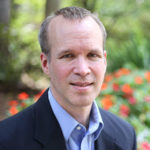Understand the “Too-Much-Talent” Effect & Its Impact on Team Effectiveness
You may have heard the saying that you can’t have too much of a good thing. But, when it comes to teams, more talent may not actually be better.
In many organizations, it’s undeniable that there are “stars” — exceptionally high performers who sustain excellence, not just for a short period, but over the long run.
For example, while several people on any given sales team might achieve high quarterly revenues from time to time, star performers often meet — and surpass — their goals, quarter after quarter. According to prior research, about 10% of the workforce can account for about 30% of productivity. These are the stars.
The benefits of having a star on the team are obvious: In academic settings, stars often win grants, sometimes just because of their name recognition. In sports settings, they guarantee fans will buy tickets.
Yes, You Can Have Too Much Talent on a Team
Here’s what’s really fascinating: You might expect that as you add more star employees to a team, that team’s performance would take off.
But in fact, research shows that when more than approximately 1/3 of a team are considered “star performers,” results often start to diminish.
The too-much-talent effect may seem counterintuitive, but examples of it abound across industries.
Any sports fan has probably witnessed the “too-much-talent” effect among their favorite teams. Our research found that this phenomenon is clearly demonstrated in sports by examining “star” talent in the National Football League (NFL) and in the World Cup soccer tournament.
On the surface, it may seem that the too-much-talent effect is caused by these superstars jockeying for power. While that’s true, the whole story is more complicated — and proves the importance of healthy team dynamics.
Chances are, if you reflect on your organization, there are places you can see the too-much-talent effect playing out.
The good news is that with intentionality, leaders can build high-performing teams and minimize the too-much-talent effect, both among team members and across the broader organization.
So if star power isn’t the only (nor even the biggest) factor for achieving team success, what should leaders focus on instead?
Use Our Team Effectiveness Framework to Build High-Performing Teams
4 Components That Drive Collective Outcomes
To better understand the factors that contribute to building high-performing teams, with an emphasis on collective leadership, we conducted research on maximizing team effectiveness. We found that 4 components are critical for successful collective outcomes — and just like the individual members of a team, each component is distinct, but also interconnected.
As detailed in our recent white paper, we call these 4 components our Team Effectiveness Framework, and leaders should consider and channel energy into each of these 4 areas as they hire team members and cultivate healthy team interactions:
The Team Effectiveness Framework shows why leaders should consider more than just talent as they’re building high-performance teams and making hiring decisions.
1. Core: A Team’s People, Purpose, and Practices
Core refers to the team’s reason for being. Organizations have missions and visions, and teams can, too.
When building high-performing teams, everyone should understand their core purpose and value, what the team is striving for, and why team members were brought together to pursue that purpose.
Of the 4 Cs in our Team Effectiveness Framework, though, Core is the only component that considers people, or the amount of talent and ability composed within the teams. This reflects our belief that leadership is a social process that enables people to work together as a cohesive group to produce collective results.
When it comes to the too-much-talent effect, Core not only considers how stars perform as individuals, but also how they help achieve the team’s broader goals.
To be sure, star performers are an important piece of the puzzle. Unless star performers are doing their jobs entirely by themselves (which is unlikely in today’s increasingly interconnected workplace), their team leaders should work to ensure that the work of the stars is aligned within the “constellation” of the broader team.
2. Collective Mindset: How Team Members Work Together
Whereas Core looks within the team to discover its talent and purpose, Collective Mindset looks among the team at its shared beliefs. How does that team work together, and what does it mean to be a good team member? What does a good team member do?
Within organizational settings, team norms and responsibilities should be well-defined, and team members should know who would backfill their roles if they were absent. When teams understand the workflow, they have a collective mindset.
This might be easier to see within sports team. For example, on a team with a collective mindset, any given player should know where their teammates will be or how they’ll move on the court or field at any time. In basketball, you’ll see a perfectly timed “no-look pass,” where someone can pass the ball without looking at the recipient because they know exactly where their teammate is going to be.
When focusing on their team’s Collective Mindset, leaders can and should strategically position star performers. That placement depends on the team’s goals and knowing team roles and teamwork blockers. Because of their outsized effect on productivity, star performers are ideally at the center of the team’s workflow, where they can provide input on important tasks and contribute to core processes.
According to research, when leaders acknowledge the role their stars play, they simultaneously acknowledge that without a strong supporting cast, the benefits of the star’s productivity are limited.
For that reason, it’s important to provide equitable access to development opportunities and distribute rewards and recognition beyond the star performers. This helps foster a collective mindset, too.
3. Cohesive Relationships: How Team Members Relate Interpersonally
In moments of intense stress and crisis, strong bonds are required for a team to stick together and focus on the task at hand. Cohesive Relationships considers a team’s social dynamics, and how inclusion, psychological safety, conflict, and trust exist within a team.
Ask yourself these questions to determine whether Cohesive Relationships exist on a team:
- Does everybody on the team feel a sense of belonging?
- Do we treat each other with consideration and respect?
- Do we communicate effectively with each other?
If leaders don’t manage both the team’s tasks and its relationships, they’ll miss a big part of building high-performing teams. Failing to balance the polarity successfully might look like focusing too much on the work itself and too little on team relationships, which will ultimately hurt team effectiveness.
In sports, this often helps explain how underdogs come to outperform their more-talented competition: when the team with fewer “stars” but greater cohesion manages to beat the team of “all-stars.” This is also a place where stars can struggle, especially if they take their teammates for granted.
Transition periods, such as onboarding, give leaders opportunities to strengthen the chemistry between team members. When existing team members embrace newcomers, they reiterate feelings of value and belonging at work, and build in ongoing opportunities for team connections.
4. Connection: Across the Organization and Beyond
Here, the focus shifts from internal teams to external stakeholders. Connection is all about how teams get things done within the broader organization.
Workplace teams are increasingly interconnected. As a result, boundary spanning leadership — connecting with colleagues from differing positions, backgrounds, locations, and experiences — is more important than ever.
The same is true in sports. Franchises and clubs that are consistently successful often feature strong working relationships between the coaching staff, front office, and ownership group. These relationships allow each part of the organization to remain focused on their own responsibilities, while also sharing insights, ideas, and resources that benefit the entire organization.
When it comes to interacting with other teams, it can make sense to have a single point of contact. If you’re a leader, ask yourself whether the responsibilities for spanning boundaries are clear for all team members.
Access Our Webinar!
Learn more about how organizations can leverage solutions focused on team building skills for leaders to improve collaboration when you watch our webinar, Improving Collaboration Through Team-Building Skills for Leaders.
What the Team Effectiveness Framework & “Too-Much-Talent” Effect Mean for Development
When it comes to building high-performing teams, team leader training is almost always beneficial to ensure that team leaders know how to create psychological safety, address conflicts and team needs, and enable team collaboration. Going a step further, understanding the 4 components of the Team Effectiveness Framework and the phenomenon of the too-much-talent effect enables a team leader to truly maximize team effectiveness and success.
Rather than simply pursuing the most talented applicants, leaders can consider how different types of talent and skills are combined and integrated on the team. They should recognize how “non-stars” can still play critical roles in achieving the team’s objectives.
And beyond hiring decisions, compensation choices and development opportunities can impact the overall team. For example, salary is only one piece of the motivation and engagement puzzle. Our research found that professional hockey teams that doubled the salaries of their players experienced only a 3% increase in winning percentage. Data from other sports backs up this point as well. This finding underscores the importance of comprehensive talent development — seeing and developing the leadership potential of everyone on the team, not just the “star players” or high performers.
Leaders have an exciting opportunity to build high-performing teams and achieve exceptional outcomes by mixing all-stars and supporting casts with diverse skills, experiences, and perspectives. Just as in the sports world, there’s a good chance your roster of talent and the composition of teams will fluctuate and change over time, underscoring the importance of regularly reevaluating and nurturing your team effectiveness.
Ready to Take the Next Step?
After you watch our webinar on Improving Collaboration Through Team-Building Skills for Leaders, let’s partner to increase team effectiveness at your organization with our research-based team development services and solutions.











